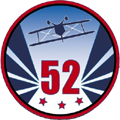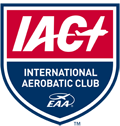


| Safety Wise | |
|
March 1999 |
|
|
Good morning, at ease ladies and
gentlemen, please take your seats. Today, class we are
going to talk about "norms" and more specifically the fact
that you are no ordinary pilot. Insurance is protection
against risks that are unpredictable for individuals, yet
predictable for a larger group. You don’t know for
sure whether or not your aircraft will crash, (barring you
suicidal types) but we can predict roughly how many
airplanes of the same type will crash across the country.
This combination of unpredictability in a specific instance
and predictability in general is what makes insurance a
business, (aside from the fact that they have investigators
which will try desperately not to pay off owing to
something which has been overlooked, - i.e. see my previous
article about weight and balance). So, over time and
experience and quality professional instruction we develop
our own SOPs or Standard Operating Procedures. SOPs should
be generated to maintain the widest possible margin of
safety as we proceed through our daily flying routines.
These SOPs are derived from FAR’s, POH, AIM, IAC and
any number and variety of alphabet soup organizations. Most
have been written due to some incident which has caused
enough "splash" to work their way into a rule or procedure.
It goes to the very core of our being to occasionally give
pause and think of a better way, perhaps an easier way; or
an opportunity to maximize our time and effort. Sometimes
our interpretation of the signals we can see compel us to
cut corners when sound dispassionate judgment might dictate
otherwise. Here is where things may start to go wrong.
Indeed, there is a significant number within our pilot
group who would contend the mark of a superior airman is
one who can play it by ear in lieu of disciplined
pre-planning, or one who may readily adopt a better way,
even if that "better" way happens to be in contravention to
safe established procedures.
Capt. Ron Spencer can be contacted via email at gwiz@idsi.net |
|
| .. | |
| Previous Safety Wise articles: | |
| [A Weighty Situation, Nov. 98] |
|